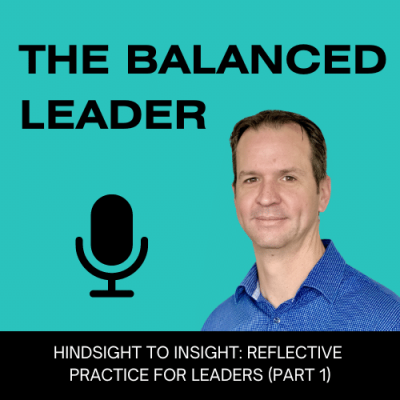In this first part in a two part series of The Balance Leader Podcast, I introduce you to reflective practice, a powerful tool I’ve used for years in leadership development and in my personal life. I explain how reflective practice involves looking back on experiences to learn and improve. I discuss the many benefits of this approach, including better decision-making, enhanced emotional intelligence, improved team management, increased wellbeing, and greater resilience.
I also provide practical tips for incorporating reflective practice into your daily life, both formally and informally, and emphasise its importance in developing leadership skills beyond classroom theory.
In part two of this series I am going to go deeper on the Gibbs Cycle, a structured method people find useful to help get the most out of their reflective practice. I will be guiding you through an example that will showcase how the method works.
Chapters
0:06 Welcome to The Balanced Leader Podcast
1:10 What is Reflective Practice
1:29 Examples of what to use Reflective Practice for
2:10 We don’t learn leadership in a classroom!
2:53 The benefits of Reflective Practice
4:44 My top tips to help you learn Reflective Practice
7:32 Formal versus informal Reflective Practice
8:35 Wrap Up

[00:00:00] Rob: This is the balance leader podcast, the podcast that helps leaders elevate their wellbeing and create healthy workplaces. My name is Rob Hills and I’m your leadership and wellbeing coach. In today’s podcast, I want to talk to you about something called reflective practice. This is something that I’ve been teaching for years as part of formal leadership programs, but it’s also a tool I use in both my professional and personal life.
[00:00:31] Because the content for this episode is going to be too long for my usual monologue style of episode, I’m actually going to split it into two parts. Today, I’m going to introduce you to reflective practice, what it is, the benefits, and how you actually do it. And then next episode, I’m going to take you through a specific tool that people find really useful in helping them to do their own reflective practice.
[00:00:55] The name of the tool is the Gibbs Cycle, and it’s a formal diagnostic that you can use to help yourself go deeper into an issue, and it helps you see things from all the different angles. But, let’s get on with today’s episode first. For me, Reflective Practice is one of the best tools I’ve found over the years to develop my leadership capability.
[00:01:17] It’s looking back on an event or a period of time with the intention of learning from it so we can improve for next time. Let me give you some examples of what you could use Reflective Practice for. If you’ve had an interaction with a co worker that didn’t quite go as well as you’d hoped. A tough month where the team had to push hard to get a project done with tight deadlines.
[00:01:40] Or even if you’ve had a narcissistic boss who keeps pushing your buttons or nitpicking every time you do something. These are all examples where reflective practice may be really useful in helping you make sense of a tough situation. It’s also had a profound impact on my well being because it allows me to take a deeper look at a given situation once the emotions have worn off.
[00:02:02] And I can be a little bit more objective. It really is quite cathartic. As a leadership facilitator myself, I am actually a firm believer that leadership can’t necessarily be taught in a classroom. Don’t get me wrong, there are certainly models, there are theories, discussions that could all be shared in a classroom that help provide the foundation for understanding what leadership is.
[00:02:25] But it’s just theory. The real learning happens in our day to day lives. We learn leadership by the situations we find ourselves in, by our actions, our own internal feedback, feedback from others, and then reflecting on what the heck happened. John Dewey, who was a prominent American philosopher and educator said, We do not learn from experience.
[00:02:49] We learn by reflecting on experience. So what are some of the benefits of reflective practice? There are many, but let me give you my top five, David Letterman style. So coming in at number five, it improves decision making. It allows for thoughtful consideration of multiple perspectives by allowing you to step back and see things from all the different angles.
[00:03:13] This allows you to zoom out so you aren’t so close to the problem. It also reduces impulsive choices and their negative consequences. At number four, enhanced emotional intelligence. It increases self awareness of emotions and their triggers. It improves the ability to recognize and respond to others emotional states.
[00:03:35] And it fosters better interpersonal relationships and communication. At number three, better team management. This enables leaders to understand team dynamics a lot more deeply. It helps in identifying and addressing team issues proactively and early. It promotes a culture of open dialogue and continuous improvement.
[00:03:56] Coming in at number two is enhanced well being for leaders and teams. It reduces stress by promoting mindfulness and presence. It helps to prevent burnout by encouraging regular self check ins. And it builds a more positive and supportive work environment. And coming in at number one, it improves resilience in the face of challenges.
[00:04:17] It helps build mental fortitude. Improves ability to bounce back from setbacks and allows you to develop a growth mindset by learning from experience. As you can see from all these benefits, reflective leadership isn’t just about improving performance, but also creating a healthier, more balanced approach to leadership.
[00:04:36] that benefits both the leader and their team. And who doesn’t want that? There are some things to keep in mind when it comes to reflective practice. Think of these as my top tips to help you learn the art of reflective practice and to get the full benefits. Number one, reflect at the right time. It’s always a good idea to step back once an initial situation has happened and give yourself a little bit of space.
[00:05:00] Don’t try and do it straight after or when you’re in the heat of the moment. Give yourself the time to step back and have that space. Number two is to balance the subjective and the objective reflections. We are sense making machines, so we’re going to try and make sense of what’s happened, and that’s okay, but just make sure you balance that with the facts of what’s actually happened in the situation.
[00:05:24] Number three is to engage a critical friend. Now, I don’t mean someone who has always been critical of you. A critical friend is actually someone who’s very encouraging and supportive, but they’re someone who also provides honest and often very candid feedback that can be uncomfortable or difficult to hear.
[00:05:43] In short, a critical friend is someone who agrees to speak truthfully, but constructively, about weaknesses, problems, and sometimes those emotionally charged issues. And at the end of the day, the good thing about a critical friend is, the friendship stays intact no matter what. Number four, choose your place to reflect.
[00:06:02] Kind of like number one, you want to be thinking proactively about when and where you do this. So when I say choose your place to reflect, It might not be in a busy office environment, or when you’ve just arrived home after a busy day. Maybe take the dog for a walk. Maybe find a quiet meeting room in the office where no one’s going to disturb you.
[00:06:21] But don’t do it where other people are going to be coming at you every couple of minutes saying, hey, can I ask you this or can I do this? At number five, use a journal or a notepad, an iPad, any type of pad really. There is some research here that suggests handwriting is a more effective way for the brain to process the information.
[00:06:40] Then typing it. So if you can and if you want to. It’s better to journal the old fashioned way. Having said that, I like to keep my notes in a secure location, so I use my iPad and an app with a lock on it because nobody wants to know what’s going on in my head. At number six, don’t overdo it. Go through the process and take the learnings, but don’t go down the rabbit hole and end up overdoing it.
[00:07:06] Here you want to be careful that you don’t spend too much time going over the same old ground and you end up ruminating. So absolutely do the process, find out what the learnings are, but then let it go. Implement, move on. This is a method you can modify to meet your needs. However you find the best way to do this, is the best way to do this.
[00:07:29] There are basically two ways of doing it. Formally and informally. If you want to practice informally, it’s something you can do every day. What went well? What could I improve on? In fact, you might already be doing this anyway. You might be doing it in the car on the way home. Or when you take the dog for a walk, you might be thinking about What happened today?
[00:07:49] How did I approach it? What could I do better? If you want to practice formally, it’s about carving out time specifically set aside for reflective practice. This can be at the end of the day, this can be at the end of the week, but rather than just thinking about it, you actually start to put pen to paper, either metaphorically or literally.
[00:08:09] I know a lot of leaders that I talk to have a journaling practice. This is an example of a more formal process. But just because it’s formal doesn’t mean that you can’t free will it and write whatever comes to mind. But there is also something like the Gibb cycle, which can help you order your thoughts just a little bit better.
[00:08:28] And again, we’re going to talk about that in the next episode. So that’s it for today. I hope you really enjoyed this episode. Reach out if you have any questions about reflective practice, or let me know how you incorporate this into your wellbeing routine. If you haven’t had a chance yet, I would love if you could rate the show and leave a comment on your podcast platform of choice.
[00:08:50] Enjoy the rest of your day, and I look forward to speaking to you next time.
